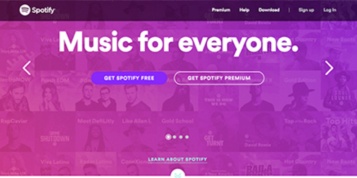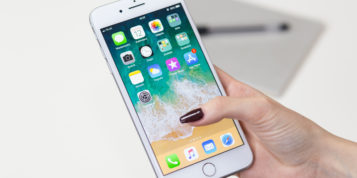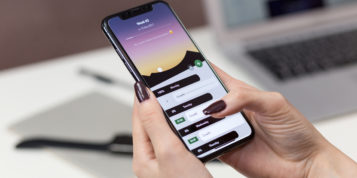Effective user acquisition strategies are the first step of app marketing. You know that you have created a beautiful app that can add real value to the lives of your users. The users, however, have no way of knowing that, until you can showcase your app on a platform that attracts your target users. You need an effective mobile app install ad campaign, on the right platforms, to make your app stand out of the over two million others.
Thankfully, there are options. Widely successful public channels like Facebook and Twitter all have their app advertising platforms that not only allow you to showcase your app before a wide network but also let you leverage their sophisticated user segmentation, tracking and re-targeting features, to make sure you attract the most engaged traffic and power up your user acquisition efforts.
The challenge however, lies in understanding how the different platforms function and which ones are the best for your mobile app. This will help you allocate your ad spend the right way and ensure maximum ROI on your marketing dollars. So let’s take a look at the pros and cons of some of the most popular app advertising models.
Facebook App Install Ads
With a towering graph of 2 billion monthly active users, Facebook is the undisputed king of social media. Clearly then, Facebook is the first place you want to take your business, because no matter who your target users are, chances are that they are on Facebook. However, if that’s not reason enough, here’s more.
Way back in 2012, Facebook launched its ‘suggested apps’ service that has since helped thousands of businesses. mySupermarket saw a 30% increase in mobile app installs using Facebook App Install Ads. Tennis Australia saw a 24.3x return on ad spend by running video and photo ads on Facebook. Tech company Cybozu doubled its app trial registrations and saw a 30% improvement in cost per acquisition using Facebook app install ads.
The driving factors behind the success of Facebook app install ads are its humongous user community as well as its suite of highly specialized ad services. The biggest one of these is of course targeted reach. Facebook tracks and stores a large amount of data on its users, enabling it to display your mobile app install ad on the timelines of the most suitable user demographics, giving you a higher click-through rate on your ad.
Image : source
In addition to its wealth of data and user segmentation, Facebook’s custom audience targeting based on behaviors and interests allows you to laser-target who sees your ads, increasing your return on ad spend many times. In addition, Facebook also offers re-engagement campaigns to increase user retention. It attempts to bring back users who left your app, by drawing their attention to a product they might have shown interest in and then directly taking them to that product in your app. As a result, Facebook app install ads not only help you acquire heaps of new users but also re-engage, track and re-target them to increase user lifetime value and user retention.
Twitter App Install Cards
According to Twitter’s internal data, 83% Twitter users are on mobile and they are on the lookout for great apps to download. Using Twitter app install cards, you can target users like this, who are already engaged and looking for a service like yours. Creating an app install campaign on Twitter helps you skyrocket your app installs by targeting specific user segments and look-a-like user groups who are most likely to download your app. Targeted users can see your app install ad on their timelines and just clicking on the tweet takes them to the page where they can download your app in their phone’s App Store or Playstore.
Twitter boasts 336 million monthly active users as of Q1 2018. So it is a fertile ground to place your app install ads. Twitter too offers the advertiser advantages as mentioned above, from user segmentation to re-targeting and re-engagement.
Here’s a sound comparison of both Twitter and Facebook ad platforms to help you understand better. Even though Facebook has more users than Twitter, Twitter has its own share of advantages. You need to either focus on solidifying your presence on both platforms, or do a discerning research to see which of the two has more in store for you.
Google App Installs
Google AdWords has long been synonymous with advertising on the internet and when it comes to increasing your app installs, the global search giant is on point again. It is undoubtedly the number one search engine claiming 74.52% of all searches according to a net marketshare report as of January 2018. Is fact when it comes to mobile searches, it leads the world by a whopping 93%. Google has well over 2 billion monthly active users.
The numbers clearly prove that Google is the first place your users are going when they have a problem. If you have an app to solve that problem, use Google to target the right searchers and offer them your app when they most need it. In fact that is the biggest advantage of using Google for advertising your app installs. You can target users who are actively looking to use a product you have to offer, making it a high conversion opportunity. You can run highly effective keyword backed campaigns n Google Universal App Campaigns to target both Android and iOS app stores.
The fact that Google allows you to target audiences across all its major properties including Search, Google Play, Google Plus, YouTube and the Google Display Network, with ad rotation and auto-bidding features gives you the most bang for your ad buck.
To sweeten the deal, Google has one of the most intuitive ad composing tools among the lot, offering dynamic ad generation. This means the tool can automatically generate vivid ads taking graphics and content from the Google Play Store.
YouTube TrueView App Install Ads
While a part of Google, YouTube is a search giant in its own right. It offers you the single biggest superpower – Video. A well-made video is more powerful than most other text and graphics content. And since users of YouTube are already prepared for watching a video, YouTube TrueView offers you the perfect opportunity to showcase the brilliance of your app on YouTube.
Instagram App Install Ads
Instagram, already bragging over 1 million advertisers, is another ripe ground for your mobile app install program. With over 600 million monthly active users, who also happen to be highly engaged, Instagram is a great place to promote your app.
In fact, Instagram invests a great deal of its efforts into making itself highly conducive to advertisers. It has a high user engagement on mobile, letting your app ads show most naturally on the users’
mobile Instagram feed. Add to that the high visual appeal of the platform itself and the added help from Facebook’s Power Editor Tool, you can create highly rich and appealing ads. Here’s a fascinating example of how Nike is nailing Instagram advertising for the win.
Another fact going for Instagram is that it has a high percentage of millennial users, making it a highly engaged place for most app users. Staying true to the millennial spirit, Instagram offers a variety of ads, from photo and video ads to carousel ads and Instagram Stories ads.
Do keep in mind though, that spending your marketing dollars on Instagram app install ads should happen only if you know for sure that your potential audience is on Instagram. If you already have a strong presence on the platform, you should definitely look at Instagram ads, but if not, you should focus on creating an Instagram following first.
So which one do you choose?
All of the above ad platforms are highly productive for app marketers, provided you know where your audience is. Do a thorough research with analytics to now where you audience is and then take up one platform or a combination of two to begin promoting your app. pay attention to planning your campaign strongly and making a great first impression. Take notice of how the competition is doing it to get the lay of the land, and learn as you go. You can always spread to more platforms as you amass the capital, and remember that marketing your app is an evolving process, so keep at it.






